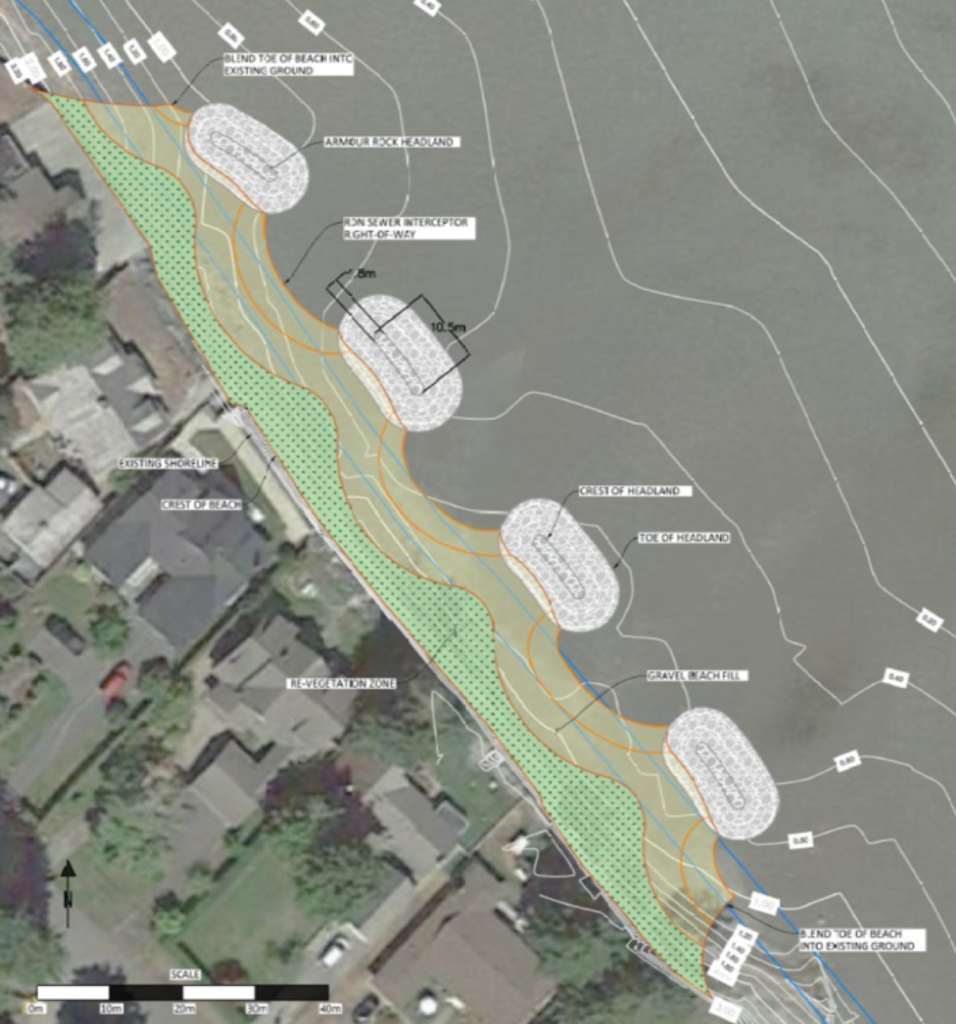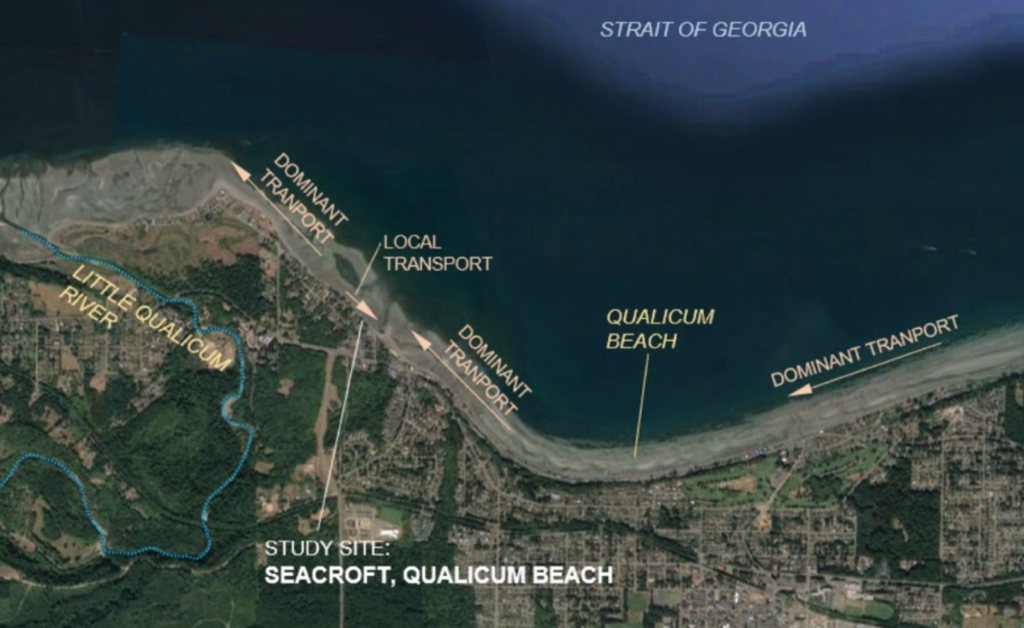Green Shores | Neighbourhood Scale Projects
Why should you consider a joint shoreline restoration project with your neighbours?
The Green Shores program promotes positive steps to reduce the impact of development on shoreline ecosystems by using nature-based solutions that also mitigate risks from climate change. Green Shores for Homes can help homeowners protect their property from flooding, storm damage, and erosion while supporting resilient shoreline values.
A Green Shores project that involves multiple adjacent shoreline homes along the waterfront can be referred to as a neighbourhood scale project. This approach can be more effective in managing and protecting shorelines from climate change risks because it aligns with how shorelines function at their full scale.

Coastal Processes
Coastal processes such as sediment transport, deposition, and erosion function at a larger scale than the dimensions of an individual property. When restoration projects are implemented on a single property scale, additional steps may be required in the design process to ensure the longevity of the project. Neighbourhood scale projects are better able to accommodate adaptation to the scale of shoreline processes and provide more opportunities for a successful design. Along with more design options, neighbourhood scale projects provide many benefits to both the environment and homeowners.

A sketch of a neighbourhood scale concept design at Seacroft, Qualicum Beach, BC. This sketch depicts how the design can incorporate a more streamlined approach on a larger scale. (Source: Northwest Hydraulic Consultants, 2021).

Depiction of shoreline processes (sediment transport) at a study site in Seacroft, Qualicum Beach, BC. (Source: Northwest Hydraulic Consultants, 2021).
Environmental Benefits
Neighbourhood scale projects provide many environmental benefits. Having a larger area of shoreline and a more natural beach profile provides the opportunity to install a larger volume of beach nourishment which then creates more habitat for forage fish and other wildlife. This “softer” shoreline with a gradual slope, rather than an abrupt sea wall, helps to dissipate wave energy and maintain natural processes (Johannessen et al, 2014). Green Shores promotes a diversity of wildlife and contributes to the resilience of the shoreline.
Neighbourhood scale projects also enhance ecological connectivity. Having a larger area of restored shoreline allows reconnecting habitat between the upland and aquatic environments, which in turn helps support biodiversity and ecosystem processes in the local area. As well, large portions of continuous shoreline habitats are more accessible to migrating wildlife and can function as a corridor to connect green spaces and wild animals living in the community (Bouamrane and Cerasi, 2021).

Homeowner Benefits
Neighbourhood scale projects provide benefits for the homeowner in a variety of ways. Firstly, there can be significant cost savings due to economies of scale (Northwest Hydraulic Consultants, 2021). For example, the cost for design and permitting can be shared among the homeowners and permit applications can even potentially submitted as one project. Most importantly, a neighbourhood scale Green Shores shoreline means all neighbours are more effectively protected. Having multiple homeowners involved brings together unique backgrounds and provides a sense of connection between neighbours. Neighbourhood scale projects also support a safe space and can help homeowners find companionship with one another (McKnight and Block, 2022).

Stewardship Centre for BC offers the opportunity for Green Shores certification for all home and shoreline development projects, as well as Green Shores training and free downloadable resources on how to apply nature-based solutions on your property. Visit the Green Shores website to learn more! Check out Green Shores case studies to see before and after examples of Green Shores projects in British Columbia and Washington.
References
Information was adapted from “Neighbourhood vs. Individual Property Scale Coastal Protection: A Case Study in Qualicum Beach, BC” presented by Grant Lamont M.A.Sc., P.Eng, Principal & Senior Coastal Engineer NHC on April 2022.
Rethinking Ecological Connectivity – A pathway towards living in harmony with Nature (April 2021). A publication developed in partnership with CMS, UNESCO and POST2020 Biodiversity Framework EU Support. Link
McKnight, J and Block, P. The Abundant Community: Awakening the Power of Families and Neighbourhoods. Retrieved September 6, 2023. Link
Johannessen, J., A. MacLennan, A. Blue, J. Waggoner, S. Williams, W. Gerstel, R. Barnard, R. Carman, and H. Shipman (2014). Marine Shoreline Design Guidelines. Washington Department of Fish and Wildlife, Olympia, Washington. Link.
Northwest Hydraulic Consultants Ltd. (NHC, 2021). Concept designs for neighbourhood-scale coastal adaptation measures in Royston and Qualicum Beach, BC – Final Report. Link.





